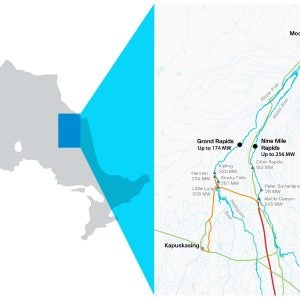BC Hydro, Canada’s Department of Fisheries & Oceans (DFO), British Columbia’s Ministry of Environment, Lands and Parks (MELP) and an aboriginal group have initiated fisheries projects to improve fish habitat and lessen the impact of dams on the Bridge and Seton rivers, in British Columbia, Canada. The initiatives were undertaken by BC Hydro as a part of the settlement of the charges filed by DFO against BC Hydro ordering the utility to operate the dams to release more water to benefit fish (see IWP&DC, June 1997, p8; and August 1997, p4).
According to the settlement a variety of fisheries initiatives, changes to operational procedures, and modifications to structures were agreed upon by BC Hydro.
Two of the proposed modifications are to design and construct a fish water release at Terzaghi dam and to discharge continuous water flows into the Bridge river downstream of the dam. Currently, the Terzaghi dam does not have a suitable outlet to facilitate the proposed water releases. A related project is to develop an annual water use plan to manage the water releases, considering the annual natural flows of the river and the requirements for fish habitat and spawning.
DFO staff are working on improving the Bridge river channel in a 4km section immediately below Terzaghi dam. The plan is to re-shape and stabilise the existing river channel, and add spawning gravel and rearing structures to improve fish habitat. Work is also under way on a fish diversion upstream of the Seton dam to re-direct fish to the Seton river, rather than to the power canal leading to the 44MW Seton generating station. BC Hydro is using fish louvres at this location, following a design from a highly successful project in Connecticut, US.
Work is also proceeding on the Downton mitigation programme. This programme involves fish and wildlife data collection, and enhancement projects in and around Downton reservoir.






